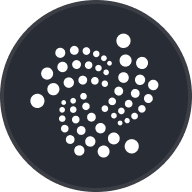IOTA Digital Price: Exploring Its Technology, Use Cases, and Future Potential
What is IOTA and How Does It Work?
IOTA is a groundbreaking distributed ledger technology (DLT) designed to revolutionize the Internet of Things (IoT) ecosystem. Unlike traditional blockchain systems, IOTA employs a unique structure called the Tangle, which is a Directed Acyclic Graph (DAG). This innovative architecture eliminates the need for miners and transaction fees, making it highly efficient for microtransactions and IoT applications.
Key Features of IOTA’s Tangle Technology
No Transaction Fees: IOTA’s Tangle removes transaction fees, making it ideal for microtransactions and enabling seamless machine-to-machine communication.
Scalability: The Tangle structure becomes more efficient as the network grows, avoiding the bottlenecks often seen in traditional blockchains.
Energy Efficiency: Without miners, IOTA consumes significantly less energy compared to conventional blockchain networks, aligning with sustainability goals.
IOTA’s Role in the Internet of Things (IoT) Ecosystem
IOTA is purpose-built to address the unique demands of the IoT ecosystem. By enabling secure, feeless, and scalable data and value transfer, IOTA facilitates machine-to-machine communication. This opens up transformative possibilities for IoT devices, such as:
Smart Appliances: Devices autonomously paying for electricity usage in real-time.
Autonomous Vehicles: Sharing road condition data to improve traffic systems.
Environmental Sensors: Monetizing data for research and development purposes.
The Africa Digital Trade Access and Public Infrastructure for Trade (ADAPT) Initiative
One of IOTA’s most impactful real-world applications is its involvement in the Africa Digital Trade Access and Public Infrastructure for Trade (ADAPT) initiative. This program aims to modernize Africa’s trade landscape by leveraging IOTA’s technology to enable:
Cross-Border Payments: Facilitating seamless, cost-effective transactions across African nations.
Digital Identities: Providing secure and verifiable digital identities for individuals and businesses.
Tokenized Assets: Streamlining trade processes through the digitization of assets.
Pilot Programs in Kenya and Rwanda
ADAPT has already demonstrated its potential through pilot programs in Kenya and Rwanda. These initiatives have shown significant efficiency gains, including reduced transaction fees and streamlined trade processes. By addressing Africa’s $25 billion annual payment transaction fees, ADAPT could revolutionize intra-African trade and economic collaboration.
IOTA’s Partnerships and Global Collaborations
IOTA has forged strategic partnerships with influential organizations, including:
African Continental Free Trade Area (AfCFTA): Supporting the digitization of trade infrastructure.
Tony Blair Institute: Driving policy innovation and economic development.
World Economic Forum: Collaborating on global initiatives to modernize trade and finance.
These partnerships position IOTA as a key player in fostering economic growth and digitizing trade infrastructure in Africa and beyond.
The Rebase Upgrade: A Game-Changer for IOTA
IOTA’s upcoming Rebase upgrade, scheduled for May 2025, represents a pivotal moment in its evolution. This upgrade introduces several transformative features:
Decentralization: Transitioning from a centralized coordinator to a validator-based governance model.
Staking Functionality: Allowing users to earn rewards by participating in network validation.
Ethereum Virtual Machine (EVM) Compatibility: Enabling smart contract functionality and interoperability with Ethereum-based applications.
Enhanced Scalability: Achieving sub-second transaction finality and throughput exceeding 50,000 transactions per second.
IOTA’s Compliance with ISO 20022
IOTA’s compliance with the ISO 20022 standard positions it as a bridge between traditional finance and blockchain technology. This compliance could facilitate its integration into global financial systems, making it an attractive option for central banks and financial institutions seeking blockchain solutions for cross-border payments.
Real-World Use Cases for IOTA
IOTA’s technology has a wide range of practical applications, including:
Cross-Border Payments: Enabling fast, cost-effective international transactions.
Tokenized Assets: Supporting the digitization of assets for streamlined trade and investment.
IoT Applications: Powering machine-to-machine communication and monetization of IoT data.
Challenges and Risks Associated with IOTA
Despite its innovative technology, IOTA faces several challenges:
Market Volatility: Like most cryptocurrencies, IOTA’s price is subject to significant fluctuations influenced by market trends and external factors.
Competition: IOTA competes with other blockchain projects targeting the IoT and financial sectors.
Adoption Barriers: Broader adoption of IOTA’s technology in the IoT and financial sectors remains a challenge due to market education and infrastructure readiness.
Conclusion
IOTA’s unique Tangle technology, real-world applications, and strategic partnerships position it as a promising player in the cryptocurrency and IoT ecosystems. From enabling microtransactions to modernizing trade infrastructure in Africa, IOTA continues to demonstrate its potential to drive innovation and efficiency. As the Rebase upgrade and ISO 20022 compliance enhance its capabilities, IOTA is well-positioned to shape the future of IoT and digital finance. However, addressing challenges such as market volatility and adoption barriers will be critical to achieving widespread success.
© 2025 OKX. This article may be reproduced or distributed in its entirety, or excerpts of 100 words or less of this article may be used, provided such use is non-commercial. Any reproduction or distribution of the entire article must also prominently state: “This article is © 2025 OKX and is used with permission.” Permitted excerpts must cite to the name of the article and include attribution, for example “Article Name, [author name if applicable], © 2025 OKX.” Some content may be generated or assisted by artificial intelligence (AI) tools. No derivative works or other uses of this article are permitted.


